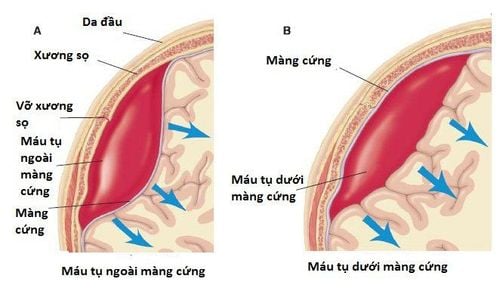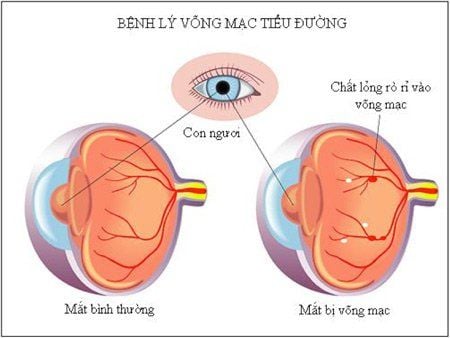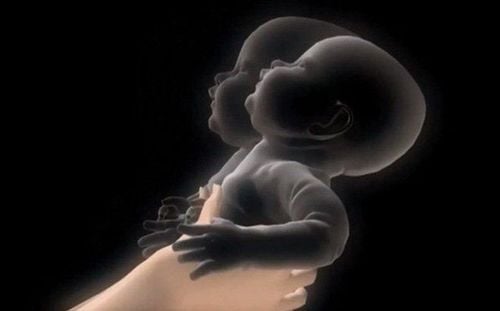This is an automatically translated article.
The article was professionally consulted by Specialist Doctor I Nguyen Thi My Linh - Neonatologist - Department of Pediatrics - Neonatology - Vinmec Danang International General Hospital.Shaken baby syndrome is a term defined in relation to injuries caused by strong shaking in a child. This syndrome usually occurs in children under 2 years of age, especially in the neonatal period.
1. What is shaken baby syndrome?
Shaken baby syndrome is considered a serious form of child abuse. This syndrome usually occurs when a parent or caregiver shakes a baby to relieve anger or frustration in the case of a baby that won't stop crying.Shaken baby syndrome causes brain cells to be destroyed and interferes with the oxygen receiving process in the brain, even causing death in children.
Shaken baby syndrome usually occurs in children under 2 years old, mostly occurs in children under 1 year old. However, children under the age of 4 can still be victims of abuse. Most cases of shaking syndrome occur between 6 and 8 weeks of age because babies tend to cry the most during this time.
For a number of reasons, such as environmental, biological or financial problems, parents experience a lot of stress, which promotes violent behavior. People who have been victims of domestic violence or abuse are more likely to engage in similar behaviors.
According to research, every year in the US, there are from 600 to 1400 cases of shaking syndrome in children. It is considered one of the common causes of death and long-term disability in young children.
2. Signs of shaken baby syndrome
The consequences of this syndrome are difficult to diagnose, and it is often not possible to clearly identify external evidence or physical manifestations of violence. It can be difficult to detect the damage (mostly from the inside) if the caregivers or even the medical staff do not notice what has happened to the child, so it is easy to mistake the signs of the syndrome. shaking in children due to other causes such as viral infections.Due to diffuse cerebral edema secondary to trauma, symptoms are often variable. After a baby is shaken, signs can appear immediately and peak in 4 to 6 hours. Children with shaking syndrome can be recognized with the following functional symptoms:
The child has many levels of cognitive disturbances The child is agitated, lethargic accompanied by struggles The child has anorexia, nausea, vomiting Coma , convulsions Child has dilated pupils and is unresponsive to light Child is irritable, irritable Child's back is arched and lying in a supine position Child's breathing rate is slow and abnormal Cardiac arrest, death death.

Appearance of skin tears Children have retinal hemorrhages, closed brain hemorrhages (subdural, epidural, lower). spider, below Galea) Trauma child Children with chest damage, abdominal damage Blood pressure index in children is abnormally low Puffy fontanelle, bruised hands, oily skin, face With children with severe shaking syndrome In mild cases, a child may behave normally after a major trauma, but over time, health or behavioral problems may develop. Many children with shaken syndrome show signs and symptoms of pre-existing abuse.
3. Consequences of shaking syndrome in children
The young neck muscles are still very weak and cannot support the relatively larger head. Children can suffer serious brain damage, even death, if the baby is shaken violently, causing the baby's head to move violently from front to back. If the shaking is interrupted suddenly when the baby's head is hit against a hard surface, the force will increase.With or without a sudden deceleration of the head from hitting a hard surface, shaking can have the following consequences:
Subdural hematoma : an accumulation of blood between the dura (the lining of the dura mater) fibers surrounding the brain surface) and the brain surface. This condition occurs when the bridging veins between the brain and the dura mater are stretched beyond their elastic capacity. The vein bursts and bleeds. Direct trauma to the brain surface : the brain is hit against the inner plate of the skull Subarachnoid hematoma : between the arachnoid membrane (the reticulum-like membrane that surrounds the brain's surface is filled with cerebrospinal fluid) and the brain. accumulation of blood Nerve branches in the cortex and deep structures of the brain are torn or broken due to a rough blow to the brain The lack of oxygen causes other irreversible damage to the brain if the child stops breathing during shaking Damaged nerve fibers release oxygen-binding chemicals from the brain that lead to brain cell damage Subretinal haemorrhage : bleeding that occurs on various levels from sporadic to diffuse multi-layered retinal haemorrhage Cranial fracture : due to head collision with hard or soft surfaces Fracture : collarbone, ribs and quads may be broken.

4. Prevention of shaking syndrome in children
When the child shows the above signs, it is necessary to bring the child to the medical facility immediately, do not intentionally shake the child to wake him up. Perform CPR on the child when the child stops breathing. Avoid rotating and immobilizing the child's neck if the child has a neck injury. The baby's head can be turned slightly to one side to prevent choking when vomiting and to prevent apnea when the child is vomiting and there is no neck injury.In order to prevent shaken baby syndrome, parents and caregivers need to be very careful and remember that the baby should never be shaken, tossed, or rocked or thrown. Hold the baby's neck in a fixed position when holding the baby. It is important to determine the cause of the baby's crying, whether the child has a fever, hunger, or another cause. In the first years of life, crying is a normal physiological activity of children when they want to achieve something that requires support from adults.
Do not get angry or lose your temper when the baby cries. Do not hit the child, do not put the baby to sleep by shaking it vigorously if the child does not stop crying. If the baby is still crying after all tests are normal, the baby can be placed in a safe place to cry alone. If you suspect that your child has a certain medical condition, you can take the child to a reputable medical facility.
Pediatrics department at Vinmec International General Hospital is the address for receiving and examining diseases that infants and young children are susceptible to: viral fever, bacterial fever, otitis media, pneumonia in children, .... With modern equipment, sterile space, minimizing the impact as well as the risk of disease spread. Along with that is the dedication from the doctors with professional experience with pediatric patients, making the examination no longer a concern of the parents.
Please dial HOTLINE for more information or register for an appointment HERE. Download MyVinmec app to make appointments faster and to manage your bookings easily.














